Contemporary ways with a traditional art form
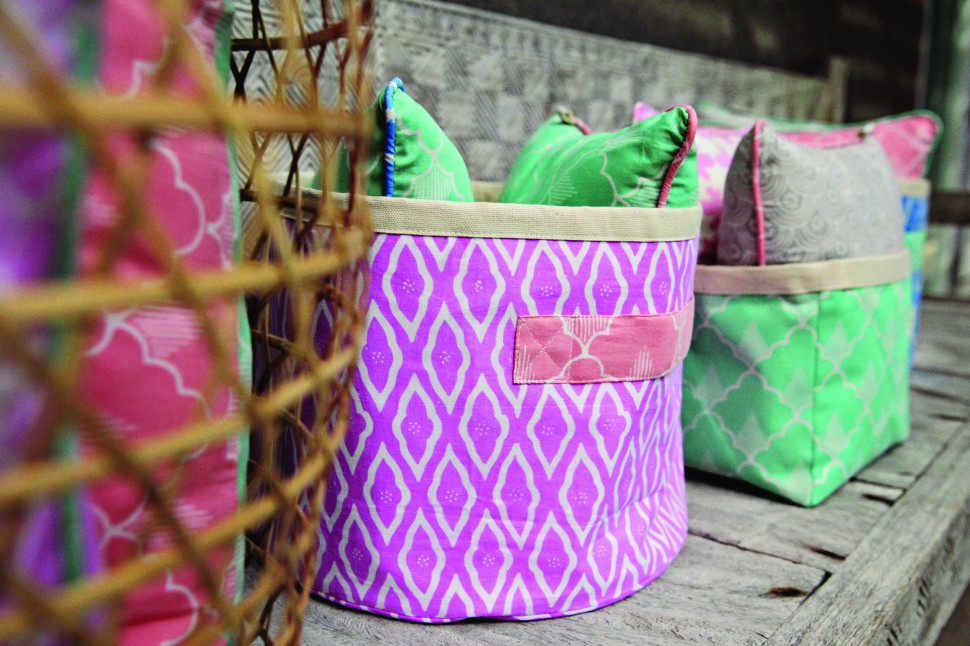
From intricately designed batik cloth for Javanese royalty to the dress code for official functions and the utilitarian sarongs sold for a few dollars, batik has seen its fair share of revivals. While the process of using hot wax as resist-to-dye on fabric remains essentially the same, current practitioners and proponents of the traditional craft are upping their game in the fashion and accessories world.
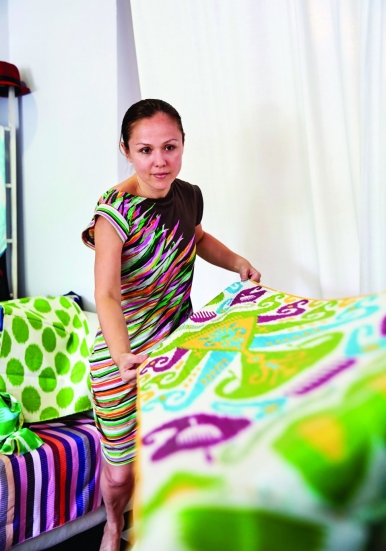
One such is Frankitas, a Malaysian brand that incorporates traditional textile motifs, among them batik, into its collection of accessories and home decor products. Founder and creative head, Franki Turner Shaik, embraces ethnic chic with contemporary twists.
“The craft of batik itself is beautiful and holds so much history and heritage. I don’t think that should be touched. However, the motifs can be more contemporary. I find the simpler the motifs, the fresher and more contemporary it becomes. Less is definitely more in the case of batik, in my view,” says Franki.
The mix of old and new appears to be working as her clutches and bags, with vivid updates of classic motifs and prints, often sell out. But trying to update an established art form can have its challenges, as Franki discovered.
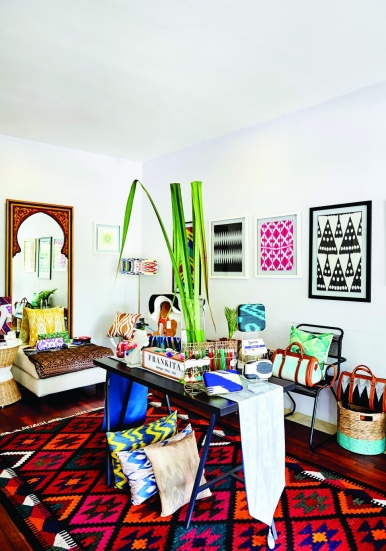
“There are two main challenges for us working with batik – finding the right batik makers that match our design as well as production needs. We love working with natural dyes, but it is proving to be quite challenging to find batik makers that can do it. Having said this, we are in discussion with Fern Chua who will now be using natural dyes. So this is exciting,” she says.
The designer in question, Fern Chua, started her label Fern as an experimental ground for her batik ideas. While the design tools of this ancient art of dyeing are typically the canting, or wax pen, and later, the cap, or copper stamp, she employs unconventional tools such as paint brushes in her design process. The handcrafted batik is then turned into ready-to-wear pieces that reflect current fashion trends. “You can see ruffles taking centre stage this season, which is a perfect match with The Wave Series,” she explains of her latest collection, which takes after the blue-green sea of Brazil's Rio de Janeiro.
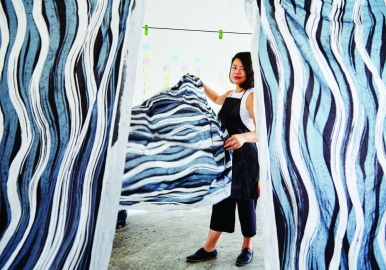
Chua is well-known for her prints, inspired by her travels and nature. Before her love affair with Rio's waters, her first collection, Kiso In Winter, was drawn from her experience of a snow blizzard in Japan and featured delicate drops and bold swathes of colour.
“For me, this is more than just fashion. I like to believe that each piece I create is an artwork in its own right, a piece of art that you can wear instead of hanging it up on the wall and to have a different perception about what batik is,” she says.
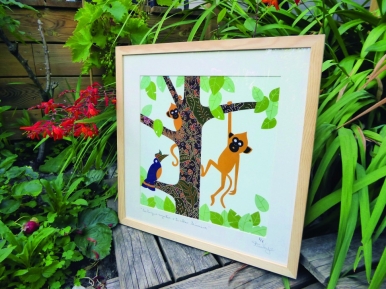
French artist, Valérie Baumal, discovered batik after moving to Malaysia with her family. “Young and old people wear this traditional fabric all over the country. During my trips around Southeast Asia, I kept buying sarongs for my friends and me. I soon had a very large collection.” Baumal lived in Malaysia for a few years before following her husband to Laos, where she is currently based.
She first picked up batik-making at the Kuala Lumpur Craft Complex, where she learned how to use the stamps and wax pen. Taken with the diversity, colours and beauty of the cloth, she wanted to incorporate them into her creations for Anakijo, her children's gifts and accessories brand.
“I started Anakijo, making collages to decorate kids' rooms. The designs are inspired by the flora and fauna of Southeast Asia mixed with traditional batik fabric. In this way, the brand seeks to educate about endangered Asian species, and to offer a unique and beautiful product,” says Baumal.
She develops the characters for her charming artwork while travelling around the region – swimming with turtles near Perhentian Island; observing storks, mudskippers and fiddler crabs at the Santubong River in Borneo; and cooing over silvered leaf monkeys in Kuala Selangor. Baumal would create the art pieces before painstakingly working the batik cloth into the artwork. From the leftover fabric, which she sources from Malaysia, Indonesia and Thailand, she created a line of accessories such as pouches and hairclips.
In Indonesia, where batik is a highly developed art form and industry, fashion designers such as Iwan Tirta have helped to introduce batik into the world's fashion scene. When they were living in the country, Judith Bakker and Naomi Pescheux started Duduk following the birth of their children. When they couldn't find children's tipi tents and affordable baby sleep sacks in Jakarta, they were galvanised to produce their own. Following a trip to Cirebon, they returned with bales of hand-stamped batik known as Batik Cap and a passion for the method. Cirebon is one of Indonesia's important batik producing areas, particularly well-known for its Chinese-influenced motifs.
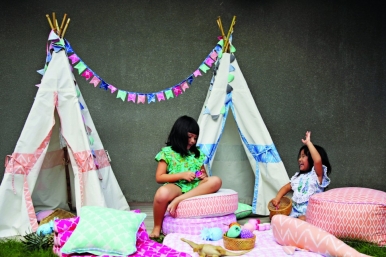
“We love the story behind each cloth of batik. The art of batik making has been passed down from generation to generation and is closely tied to Indonesian culture and national heritage. We like the labour intensive process starting from the cap or tulip process to the hand-dyeing and boiling off the dye to finally drying the fabrics in the sun. Each step of the process brings subtle variations into the final design and colour and can never be replicated,” says Pescheux.
The brand started with tipi tents and now includes poufs, pillows, bedding and floor mats in distinctive batik motifs using the Batik Cap method and cheery colours.
Besides injecting a fresh flair, the two are also looking after their carbon footprint in their production methods – this method pollutes when chemical dyes and waxes are not disposed of properly. Bakker and Pescheux have been careful to source for trusted suppliers who work in a more sustainable way with organic dyes, but their numbers are scarce.
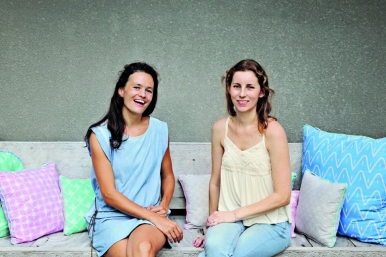
“There have been some EU-led clean batik initiatives several years ago; however, it is next to impossible to control the batik industry because so much of it is home-industry based. There is also the understandable resistance from older generations of makers who claim they have been making batik like this for generations,” says Pescheux. “Change is always hard. However, there is hope with a younger generation of batik makers to modernise the industry while keeping its authenticity.”





